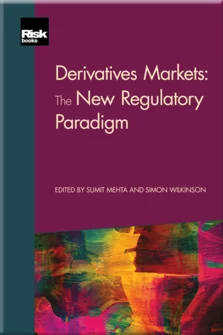Counterparty Risk Management
Adam Baker and Dominic Smallwood
Counterparty Risk Management
Introduction
European Market Infrastructure Regulation
Dodd–Frank
Basel III
Solvency II
CCPs: Central Clearing of OTC Derivatives
Banks: The Impact of New Regulation
Asset Managers
Hedge Funds: Risk Management in an Illiquid World
Insurers: Liability-driven Investing for Insurers
Corporate Treasuries
Sovereigns
Other Sectors
Counterparty Risk Management
Collateral: Transformation & Optimisation
Liquidity
Pricing
Conclusion
WHAT IS COUNTERPARTY RISK AND WHERE DOES IT ORIGINATE?
Counterparty risk arises from the potential of one of the involved parties in a transaction to default, resulting in replacement risk for the non-defaulting party. Replacement risk can be broken down into a variety of components (see Figure 14.1).
-
- Mark-to-market exposure: As part of the close-out process, there may be realised mark-to-market exposure on the underlying contract.
-
- Liquidity risk: There is a risk in sourcing sufficient liquidity in the market to fully replace the original transaction that has been closed out.
-
- Operational risk: There is an operational process that must be followed for the close-out of a position. This involves notification around an event of default, replacing the transaction in the market, handling any collateral or margin payments, managing settlement amounts and dealing with any disputes arising from the process. Risk can arise via the potential for imperfect results from any of these processes.
-
- Legal risk: There may be a risk arising from the legal enforceability of contracts, particularly around netting and collateral enforcement.
Copyright Infopro Digital Limited. All rights reserved.
As outlined in our terms and conditions, https://www.infopro-digital.com/terms-and-conditions/subscriptions/ (point 2.4), printing is limited to a single copy.
If you would like to purchase additional rights please email info@risk.net
Copyright Infopro Digital Limited. All rights reserved.
You may share this content using our article tools. As outlined in our terms and conditions, https://www.infopro-digital.com/terms-and-conditions/subscriptions/ (clause 2.4), an Authorised User may only make one copy of the materials for their own personal use. You must also comply with the restrictions in clause 2.5.
If you would like to purchase additional rights please email info@risk.net









